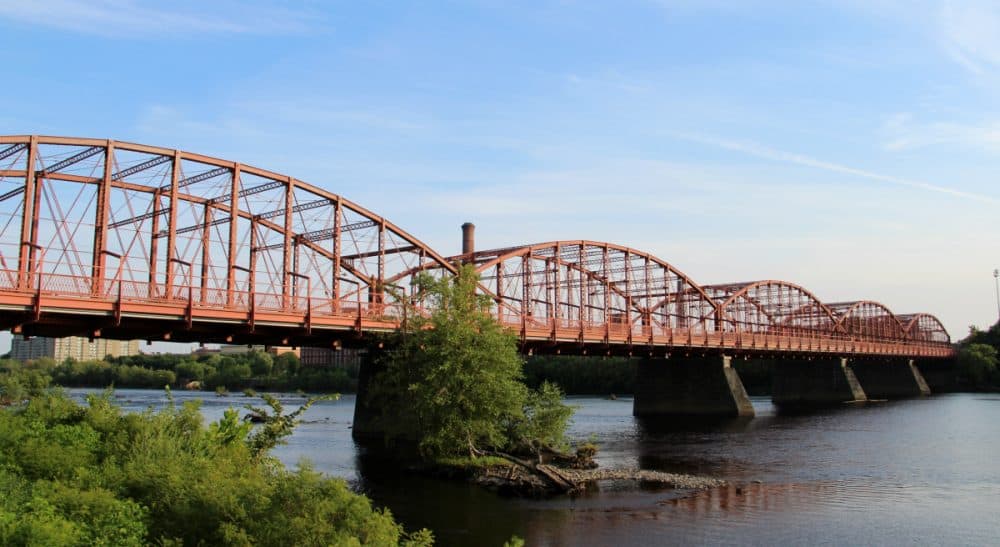Advertisement
Gateways To The American Dream: Expanding Our Notion Of The Best Places To Live

My husband and I know a couple in their 30s who relocated to the Boston area from Georgia a few years ago. They recently had their first child and are looking to upgrade from a small rental apartment to a house of their own. Like many people, they are convinced that, in order to maximize their daughter’s chances of a happy childhood and admission to a respectable college, this house must be in one of our area’s “good towns,” i.e., affluent suburbs with high-ranking school systems and median home prices starting in the $800,000s.
...government officials across the commonwealth are wringing their hands over what can be done as young people -- essential to the local work force -- are being priced out.
The problem? In places like Belmont and Lexington, even the most dilapidated post-war Cape is well beyond their means. In fact, these days, a similar fixer-upper in a less expensive Boston suburb, never mind within the city itself, would strain the budgets of most couples their age, even with both spouses working full time. Because, as we often hear, even as local housing costs have shot into the stratosphere, area wages are flat.
As the spring real estate market heats up, and regional housing prices continue to reach ever-dizzying heights, government officials across the commonwealth are wringing their hands over what can be done as young people — essential to the local workforce — are being priced out.
A few have proposed solutions. The Massachusetts Senate recently proposed creating “millennial villages” to house 20- to 34-year-olds as part of an overall plan to address the large number of graduate students occupying housing that once provided homes for families. Gov. Charlie Baker has called for underutilized state properties to be used as building sites for affordable housing. And Boston Mayor Marty Walsh has called for 53,000 new housing units to be built in Boston by 2030.
That’s all well and good, but I’ve yet to hear anyone mention a more immediate solution. Here's one that's worked for my family and for several of our friends: Consider buying a home in one of eastern Massachusetts’s Gateway Cities.

For the last 17 years, my family and I have lived in Lowell, a post-industrial city of about 100,000 people, 27 miles northwest of Boston. Although I grew up in a suburb next to Boston, when it came time for my husband and me to buy a home, the communities closest to the city were just too pricey. Since 2000, we have owned two houses in Lowell. Our first, purchased in November 2000 during the housing boom, cost just $126,000. And our most recent purchase, just a couple of years ago, is a gorgeous 2,300-square-foot 1923 Colonial Revival with an attached garage, three-season porch, private yard and large driveway in the city’s posh Belvidere neighborhood. That house cost less than $300,000.
Of course, we’ve heard all the arguments against living in a city like Lowell. After all, up until the mid-1990s, it had a bad — and well-deserved — reputation for crime, poverty, drugs and gang violence. The city still faces some critical challenges, including homelessness and widespread opiate addiction and its attendant crimes. Nearly 17 percent of city residents live below the federal poverty line. But over the years, we’ve been fortunate to serve as witnesses as our once-troubled adopted hometown has risen from its post-industrial ashes to become a magnet for artists, tech startups, cultural organizations and young families.
Fantastic ethnic food — from Japanese ramen and sushi and Cambodian fare to Portuguese, Lebanese and Greek cuisine -- can be found on just about every corner in downtown Lowell. We have a world-class repertory theater, a national park, a minor league baseball team, a respected community hospital, great museums, a major research university and a full roster of annual festivals and events.
...although many people said we were nuts for raising our daughter here, it turned out to be one of the best decisions we made as parents.
And although many people said we were nuts for raising our daughter here, it turned out to be one of the best decisions we made as parents. Now a senior at Lowell High School, our daughter has had the benefit of having friends from every imaginable racial, cultural, ethnic and religious background. Growing up in Lowell has helped her to become a more culturally aware, cosmopolitan and forward-thinking individual than many kids her age who were raised in some of those “good towns.” And some of the money we saved on housing will be going toward her tuition at a competitive New England liberal arts college this fall.
Other Massachusetts Gateway Cities are following Lowell’s lead. Haverhill is on the verge of a massive revitalization project along its downtown riverfront that will include a marina, office and retail space, and housing. Even once-down-and-out Lawrence is beginning to make a comeback, with Northern Essex Community College recently opening a beautiful new campus downtown, and many of its old mill buildings being turned into upscale condos and lofts.
Several attractive houses are for sale in my neighborhood right now. Some have been on the market for a while, most with price tags far below what you’ll see elsewhere in the Greater Boston area. Young families looking for homes of their own, including our friends from Georgia, should give a gateway city a chance.
